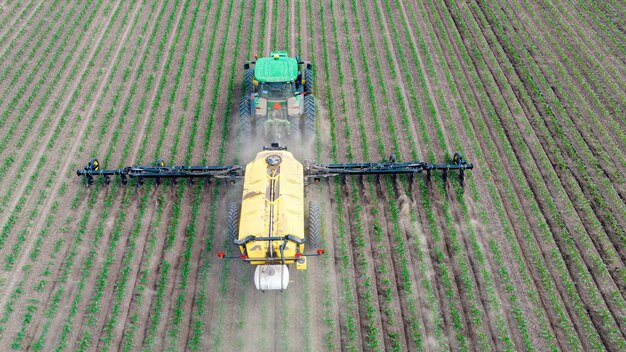A well-planned fertilizer application system is essential for maximizing crop yields, reducing input costs, and minimizing environmental impact. Efficient fertilizer use ensures that plants receive the right nutrients at the right time while avoiding wastage and soil degradation. Below are key steps to setting up an effective fertilizer application system for your farm.
1. Conduct Soil Testing and Analysis
Before applying any fertilizer, it is crucial to understand your soil’s nutrient content and deficiencies. A soil test helps determine the correct type and amount of fertilizer needed.
- Collect soil samples from different sections of the farm.
- Send samples to a certified laboratory for analysis.
- Use test results to create a targeted fertilizer plan that meets crop-specific nutrient requirements.
2. Choose the Right Fertilizer Type
Selecting the right fertilizer depends on crop needs, soil conditions, and environmental considerations. Common types include:
- Organic fertilizers (compost, manure, bio-fertilizers) improve soil structure and microbial activity.
- Inorganic fertilizers (NPK blends, urea, ammonium sulfate) provide precise nutrient compositions.
- Slow-release fertilizers supply nutrients over an extended period, reducing leaching and runoff.
3. Select the Best Application Method
The method of fertilizer application affects efficiency, nutrient absorption, and crop growth. Common techniques include:
- Broadcasting: Spreading fertilizer evenly over the field, suitable for pre-planting application.
- Band placement: Placing fertilizer in rows close to plant roots for efficient uptake.
- Foliar feeding: Spraying liquid fertilizer directly on leaves for quick nutrient absorption.
- Drip fertigation: Applying liquid fertilizer through an irrigation system, reducing waste and ensuring uniform distribution.
4. Invest in Proper Equipment
The right equipment improves accuracy, reduces labor, and enhances efficiency. Options include:
- Broadcast spreaders for even distribution of granular fertilizers.
- Planter-mounted applicators to apply fertilizer while planting.
- Sprayers for liquid fertilizers and foliar feeding.
- Drip irrigation systems for precise nutrient delivery in controlled amounts.
5. Time Fertilizer Application Correctly
Applying fertilizer at the right growth stage ensures optimal nutrient absorption and plant development.
- Pre-planting application enriches the soil before planting.
- Side-dressing provides nutrients during critical growth phases.
- Split applications divide fertilizer doses over multiple stages to prevent nutrient loss.
6. Monitor and Adjust Application Rates
Over- or under-fertilizing can affect crop health and yield. Regular monitoring helps maintain the right balance.
- Use precision agriculture tools like GPS-based spreaders to optimize application.
- Implement crop sensors to detect nutrient deficiencies and adjust accordingly.
- Keep records of fertilizer use, soil test results, and yield data for future improvements.
7. Adopt Sustainable Fertilization Practices
To ensure long-term soil health and environmental protection:
- Use cover crops to improve soil fertility naturally.
- Rotate crops to prevent nutrient depletion.
- Apply fertilizers based on the 4R principles: Right source, Right rate, Right time, and Right place.
Setting up an efficient fertilizer application system requires careful planning, proper equipment, and sustainable practices. By conducting soil tests, choosing the right fertilizer, applying it correctly, and monitoring results, farmers can maximize productivity while minimizing waste and environmental impact. A well-managed fertilization strategy leads to healthier crops, higher yields, and long-term soil fertility.
Join 'Farmers Mag' WhatsApp Channel
Get the latest Farming news and tips delivered straight to your WhatsApp
CLICK HERE TO JOIN






